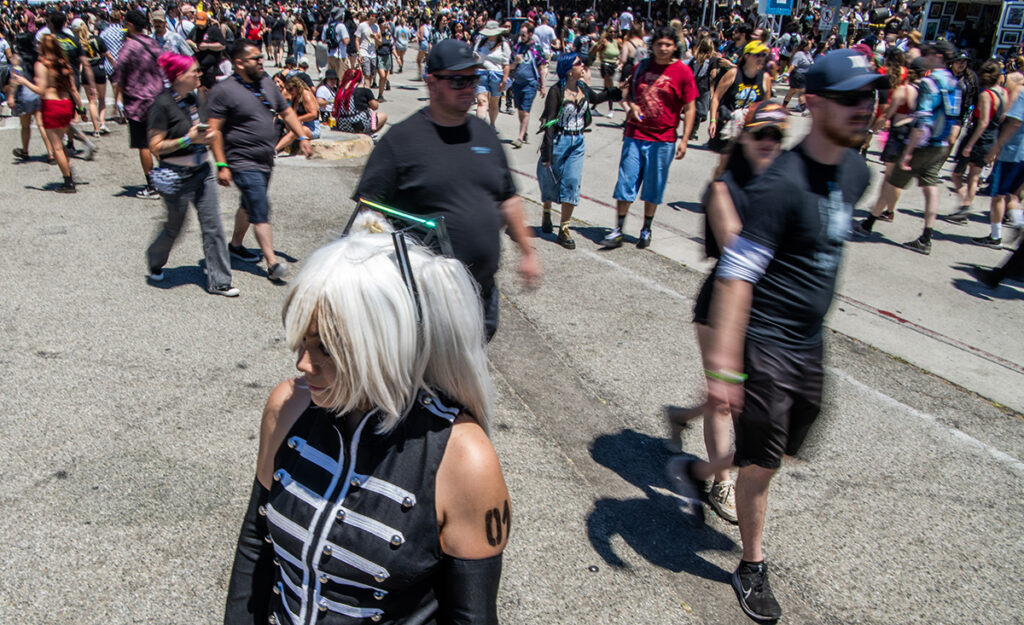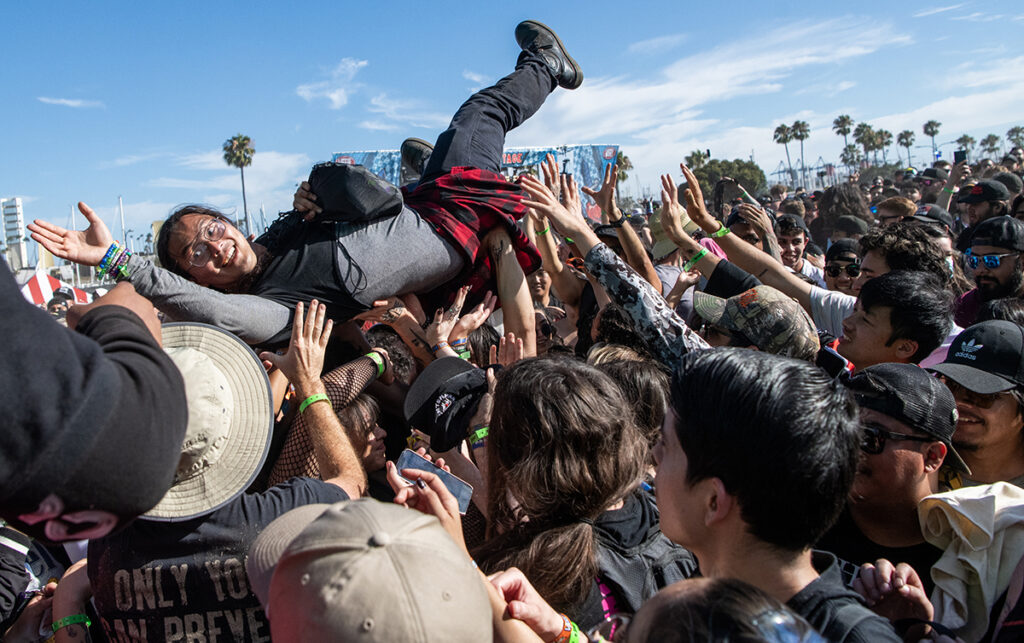When the Vans Warped Tour arrived in Long Beach on July 26, Mayor Rex Richardson touted it as the largest music festival in the city’s history and hopped on stage to introduce Sublime, one of our most renowned local bands.
The scene mirrored a pledge Richardson made on another downtown stage in January: During his state of the city, he promised Long Beach would become a musical juggernaut capable of drawing world-class acts, and the crowds that come with them, year-round.
It’s a strategic move. As the city’s ability to depend on oil extraction wanes, this transformation is meant to spur growth and replace declining tax revenue. Warped Tour, which officials promised would draw over 80,000 people daily, was the most visible example so far of what Long Beach’s entertainment-centric future could hold.
On city streets, residents said the influx of attendees each morning brought street traffic to a crawl and strained an already thin parking supply. But restaurant owners said it was nevertheless a welcome reprieve from days when they struggle to justify even staying open.
Orsa Modica, owner of Modica’s Deli on the corner of Ocean Boulevard and Linden Avenue, said she saw a roughly 25% increase in her sales.
“There was a buzz in the air,” Modica said. “It didn’t seem like a ghost town.”

The only downside, she said, was that she had regular customers cancel their online orders because of parking and traffic issues.
But to the chagrin of some businesses, Warped Tour organizers didn’t allow reentry and didn’t post the day’s lineup of bands until the festival gates opened at 11 a.m., meaning local restaurants saw surges of business at the beginning or end of the day instead of steady foot traffic.
Dani Dodge, a downtown resident who attended the festival, meanwhile, said she was able to walk to the festival and “had a blast.”
“This is an incredible event for Long Beach to host and to be associated with,” Dodge said.
Others sought an escape from the crowds. Jim Goodin, who has lived in an apartment overlooking Shoreline Drive for nearly three decades, said he has a set routine for when festivals come to town. In this case, a stage was set up roughly 50 feet from his apartment building.
If he closes doors and sits in the room furthest away from the street, he can watch TV with his headphones on and forget there’s a concert happening.
Goodin and his neighbors have been making the city aware of their predicament for years, resulting in incremental changes, he said. At past events, the speakers have faced his apartment building. Now, they face away.
Still, at the recent festival, Goodin said he measured noise levels that are four times what city ordinances allow.
“We all want them to have successful events, we just don’t want it to risk our health,” Goodin said.
The broader economic outlook
Long Beach is betting on larger downtown crowds becoming a more regular occurrence. It is in the midst of constructing a temporary, outdoor amphitheater near the Queen Mary. The project, called the Long Beach Bowl, is tentatively slated to open in April.
Mayor Richardson predicts projects like this to boost tourism in Long Beach, where — like many cities statewide — it’s been slow to rebound after the pandemic. Locally, there are already positive signs.
In 2023, visitor spending had a $1.9 billion impact on the city’s economy, according to a study commissioned last year by the Long Beach Convention and Visitors Bureau, a city-funded nonprofit that promotes business and pleasure travel.
That year, local hotel revenue and air travel grew more rapidly than Los Angeles County’s in part because of Long Beach’s reliance on “business and convention visitors,” which have bounced back more quickly, the study’s author, Robert Kleinhenz, wrote.
Adding in more entertainment-based tourism with the Long Beach Bowl “has potential” to drive that $1.9 billion impact even higher, Kleinhenz said in a phone interview.
A “vibrant downtown that appeals to visitors” would be a “win-win between the convention industry” and local businesses, Kleinhenz said.
Whether the transformation will happen fast enough for local businesses and whether they’ll experience the promised economic payoff remains to be seen.
“Downtown is struggling,” Clay Wood, owner of Clay on First Pottery Studio, told the mayor at a town-hall style meeting this summer.
Richardson was laying out how the Olympics — the biggest event of the decade — could boost Long Beach’s economy, but Wood and other business owners weren’t assuaged.
“I feel like the Olympics are just a distraction,” he said. “I mean, it’s two months. It’s going to help our businesses three years from now. What’s happening right now?”
He and dozens of downtown business owners have pushed for more frequent small-scale events that can help enliven the area and counteract the homelessness and vandalism that drive away customers and drive up costs.
City leaders are trying to make good on their request with experiments like limited public events that allow walking around with open containers of alcohol.
The first one took place on The Promenade on Aug. 2, with plans to slowly scale them up.
Warped Tour, meanwhile, is already scheduled to return to Long Beach next summer.

